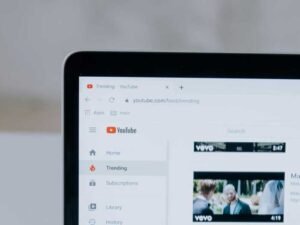Staying connected is a necessity, whether you’re traveling, commuting, or working remotely. But sometimes, finding a reliable internet connection can be a challenge. That’s where knowing how to share your internet on the go can be a lifesaver.
Whether you’re trying to connect multiple devices, provide internet access to a friend, or ensure you have a stable connection in an unfamiliar location, there are plenty of options available.
So, what’s the best way to share internet on the go? Here are some of the most effective solutions, along with tips for making the most of each method.
Use Your Smartphone’s Mobile Hotspot
One of the easiest and most common ways to share internet on the go is by using your smartphone’s mobile hotspot feature. Almost all modern smartphones allow you to turn your cellular data into a WiFi network, enabling other devices – like laptops, tablets, or even other phones – to connect and access the internet.
To use your mobile hotspot:
- Go to your phone’s settings and find the “Hotspot” or “Tethering” option.
- Turn it on and set up a secure password.
- Connect your devices by selecting the hotspot from the available WiFi networks.
While mobile hotspots are incredibly convenient, they do come with some limitations. First, they can drain your phone’s battery quickly, so it’s best to have a power bank or charger handy. Second, your carrier may impose data limits or charge extra for hotspot usage, so check your plan to avoid unexpected costs.
Share WiFi Between Phones
There are situations where you may need to share internet from one phone to another, especially if one device has a stronger signal or a more generous data plan. If you’re wondering how to share WiFi between phones, there are a couple of ways.
- Use a Mobile Hotspot. Just like sharing internet with a laptop, you can enable the hotspot feature on one phone and connect the second phone to it.
- Use Bluetooth Tethering. If you want to conserve battery and data, you can share internet via Bluetooth. This method is slower than using a WiFi hotspot, but it works well for basic browsing.
- Use USB Tethering. If both phones have USB OTG (On-The-Go) capability, you can share the internet using a USB cable. This method provides a more stable connection and prevents unnecessary battery drain.
No matter which method you choose, always keep an eye on data usage. Streaming videos, downloading large files, or running background apps can quickly eat through your data plan.
Invest in a Portable WiFi Hotspot
If you travel frequently or need a more stable connection, a dedicated portable WiFi hotspot is a great investment. These small devices use cellular networks to create a WiFi signal, similar to a phone’s hotspot, but with better reliability and battery life.
Unlike phone hotspots, portable hotspots are designed to handle multiple devices at once without compromising speed. They also often have better range and can support higher data allowances. Some models even allow you to swap out SIM cards, which is useful when traveling internationally.
When choosing a portable WiFi hotspot, consider factors like battery life, network compatibility, and data plans. If you’re someone who constantly needs an internet connection on the go, this is one of the best options available.
Use Public WiFi – With Caution
When you’re on the go, public WiFi networks in places like coffee shops, airports, and hotels can be a convenient way to access the internet. However, while they offer free and easy connectivity, they also come with security risks that can put your personal information at risk.
To stay safe while using public WiFi, it’s important to avoid accessing sensitive information, such as banking apps or personal passwords. Public networks can be prime targets for hackers who intercept data and exploit unsecured connections. A good way to protect yourself is by using a Virtual Private Network (VPN), which encrypts your internet activity and keeps your data secure. Additionally, it’s always a good idea to connect only to reputable networks provided by businesses you trust rather than open, unsecured networks that don’t require a password.
Take Advantage of Data-Sharing Plans
Many mobile carriers offer data-sharing plans that allow multiple devices to use the same pool of data. This can be a cost-effective way to ensure that your tablet, laptop, or even family members have access to mobile internet when needed.
With a data-sharing plan, you can:
- Assign data limits to each device to prevent overages.
- Manage multiple devices under a single bill.
- Enjoy the flexibility of using data on different devices without needing individual plans.
If you have multiple devices or travel frequently with others, a data-sharing plan can be a smart way to ensure internet access without the hassle of multiple subscriptions.
Adding it All Up
When you’re on the go, make sure you’re smart about how, where, and when you’re sharing internet. WiFi networks are prone to hacking – without the proper safeguards in place – and you don’t want to become a victim.
By using the right preventative measures and prioritizing secure sharing, you can enjoy the internet with less risk and more reward!










